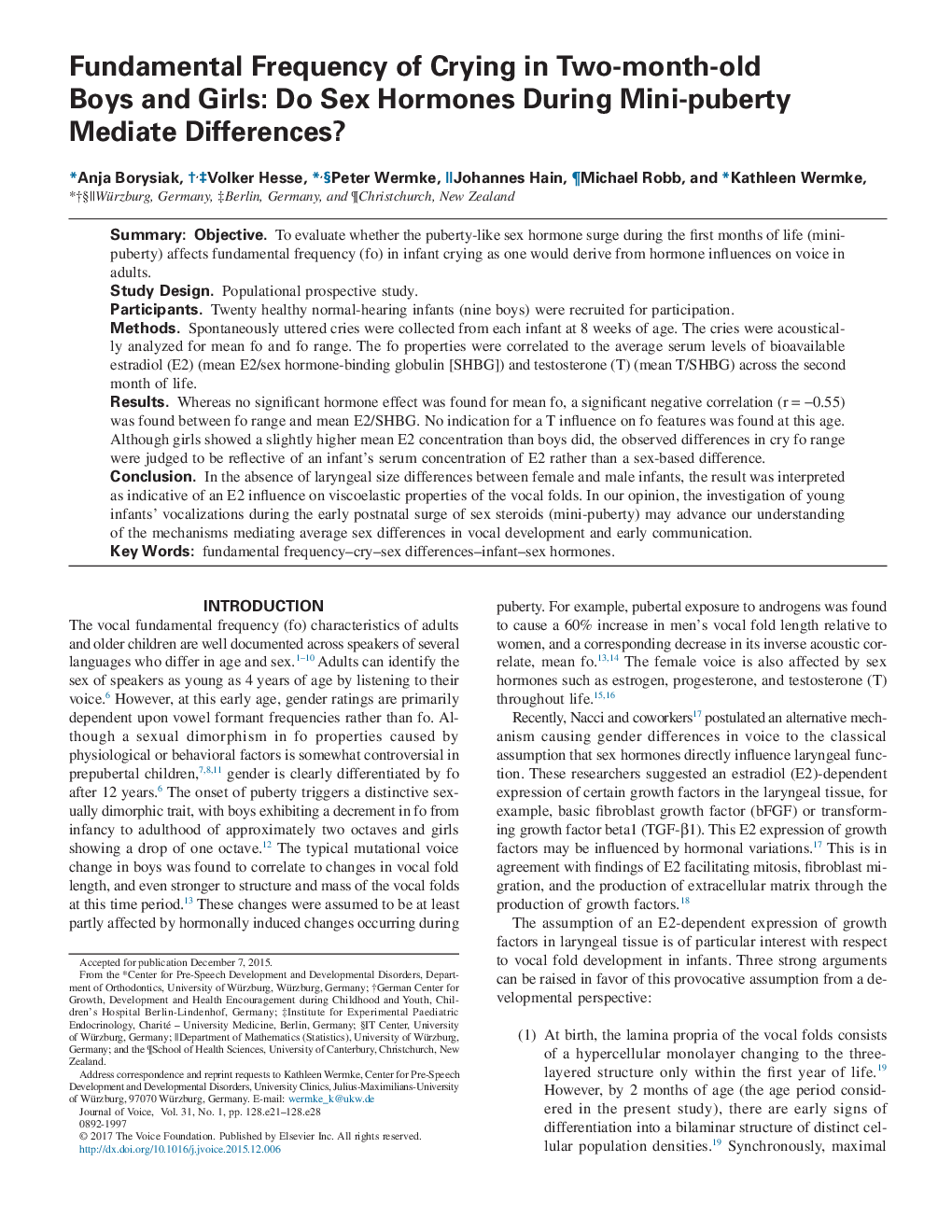| Article ID | Journal | Published Year | Pages | File Type |
|---|---|---|---|---|
| 5124366 | Journal of Voice | 2017 | 8 Pages |
SummaryObjectiveTo evaluate whether the puberty-like sex hormone surge during the first months of life (mini-puberty) affects fundamental frequency (fo) in infant crying as one would derive from hormone influences on voice in adults.Study DesignPopulational prospective study.ParticipantsTwenty healthy normal-hearing infants (nine boys) were recruited for participation.MethodsSpontaneously uttered cries were collected from each infant at 8 weeks of age. The cries were acoustically analyzed for mean fo and fo range. The fo properties were correlated to the average serum levels of bioavailable estradiol (E2) (mean E2/sex hormone-binding globulin [SHBG]) and testosterone (T) (mean T/SHBG) across the second month of life.ResultsWhereas no significant hormone effect was found for mean fo, a significant negative correlation (râ=ââ0.55) was found between fo range and mean E2/SHBG. No indication for a T influence on fo features was found at this age. Although girls showed a slightly higher mean E2 concentration than boys did, the observed differences in cry fo range were judged to be reflective of an infant's serum concentration of E2 rather than a sex-based difference.ConclusionIn the absence of laryngeal size differences between female and male infants, the result was interpreted as indicative of an E2 influence on viscoelastic properties of the vocal folds. In our opinion, the investigation of young infants' vocalizations during the early postnatal surge of sex steroids (mini-puberty) may advance our understanding of the mechanisms mediating average sex differences in vocal development and early communication.
